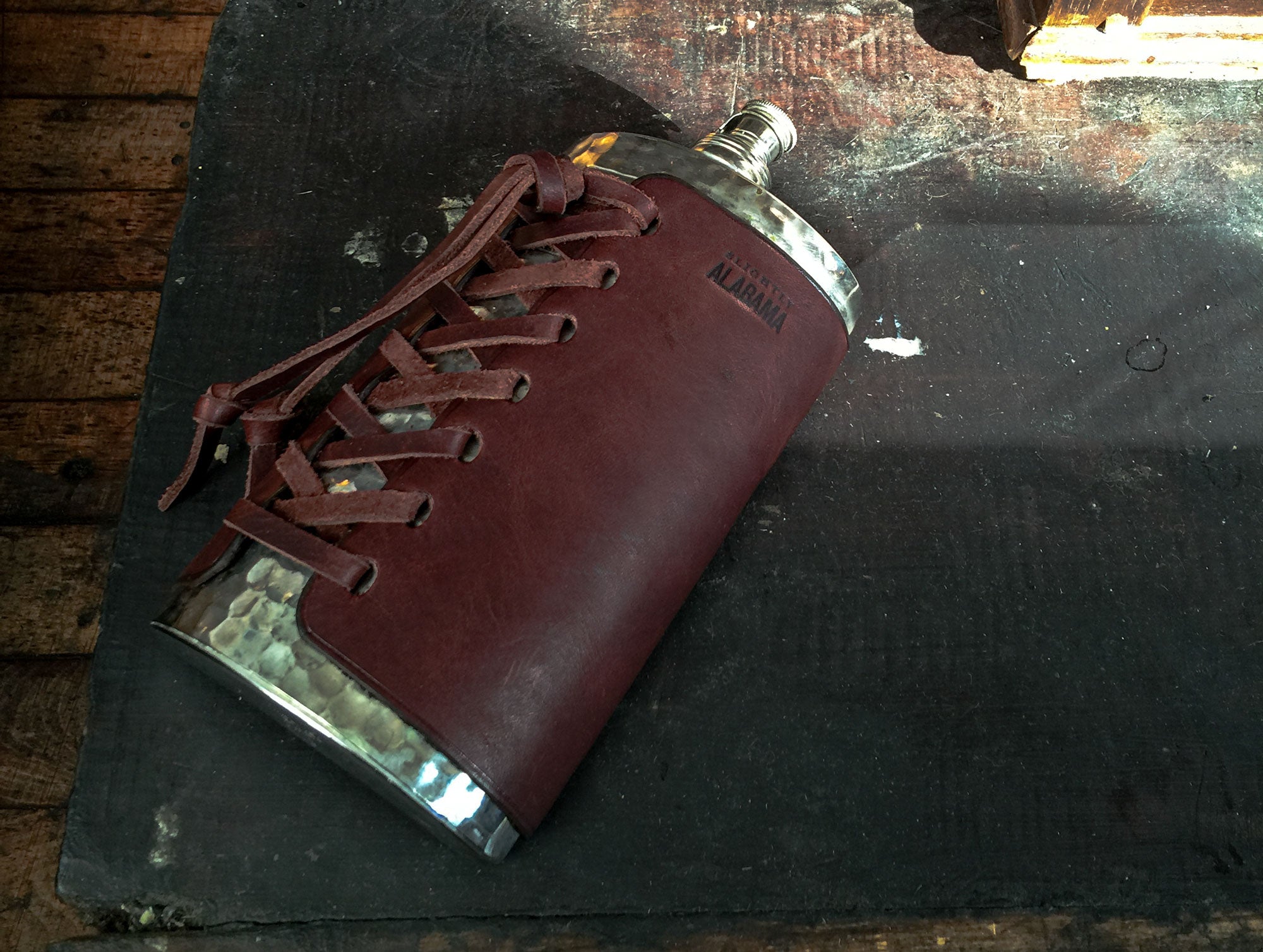The History of the Flask
Since the 18th Century, men and women have carried flasks—discreetly tucked into a hip pocket, purse or boot leg—always sure to have their favorite spirit close at hand. While the origins of today's flasks date well back to the Stone Age, only in its modern form has the flask been elevated from vessel to status symbol as a true gentleman's or lady's accessory. In the days before 24-hour liquor stores and hotel mini-bars dotted every nook and cranny of our modern world—travelers, adventurers, soldiers and rebel rousers were sure to never be without a flask as their constant companion. Today, it's as much for its usefulness as it is for the mystique that shrouds a world long since past when liquor wasn't always easily (or legally) available, that we still collect, carry and swig from our own trusted flasks.
Always carry a flagon of whiskey in case of a snakebite and furthermore always carry a small snake.
—W.C. Fields
|
|
|
The origins of the flask can be traced to Paleolithic humans living in the Stone Age who may have filled animal skin pouches with fermented wild grapes. Later, during the early Middle Ages, flasks were mass produced from molds for pilgrims to carry water and oil to and from pilgrimage sites. These early flasks often included decorative elements which represented the saints of the holy sites they visited.
However, it wasn't until the 18th century that we begin to see the emergence of the flask as we know it today. This is due in large part to advancements in the distillation process, which made it possible to produce the sort of alcohol that could withstand long journeys without spoiling. Whereas wine and fermented ale require an airtight seal to keep its freshness, distilled spirits could last for some time in a flask without affecting its taste or alcohol content making it ideal for transporting in small quantities within a glass or metal container.
Prohibition
The flask played a significant role during the 1920's when America enacted prohibition laws preventing the production, distribution or consumption of alcohol throughout the country. Not surprisingly, along with the speakeasy, the popularity of the flask surged as men and women flouted laws, carrying flasks of whiskey and rum beneath their clothes to nip at, share and sell.
 |
 |
 |
Masonic Flasks
Between 1810-1830, the expansion of the Masons ushered the rise in popularity of the Masonic flask. Traditionally a glass blown flask made primarily in the Northeast by Masons themselves for the Lodge meetings where attendees were expected to bring their own liquor. These flasks can be identified by the Masonic symbols embossed onto the glass during the production process.
Materials
No discussion of the flask is complete without an overview of the materials used to make them. With the advancement of the distillation process, flasks began to be produced on a large scale being made primarily of glass, pewter, sterling silver and stainless steel.
Glass
Dating back to 5000-3500 BCE, blown glass has been used as a container for liquids, most widely used in the Masonic flasks mentioned above. Today's glass flasks are often combined with a metal cap and base to reinforce the fragile glass itself.
Stainless Steel
The most popular material used today is stainless steel due to its affordability and strength. Stainless steel is made of an alloy that resists corrosion, rust and stains, making it easy to clean and ideal for holding liquids. Of the materials mentioned here, stainless steel is by far the most durable, scratch and tarnish resistant and maintains it's high polish for years.
Pewter
A malleable metal alloy that dates back to the Bronze Age, pewter is more costly than stainless steel but less expensive than sterling silver. Noted for its distinctive patina—particularly in older flasks, which have tarnished and oxidized turning the metal a dark grey—a pewter flask often has that distinctive look of a traditional heirloom piece. Due to the high lead content in older forms of pewter, it's important to remember that vintage pewter flasks should not be used to store liquor, but rather as a collectible heirloom.
Sterling Silver
Dating back to 12th Century England, Sterling Silver is by far the most precious metal for flask production and thereby the most expensive with a prices going well over $10k. Made of 92.5% of silver and 7.5% of other metals, usually copper to give it strength, sterling silver is ideal for precious heirloom pieces.
Drink! For you know not whence you came, nor why. Drink! For you know not why you go, nor where.
—Omar Kayyam
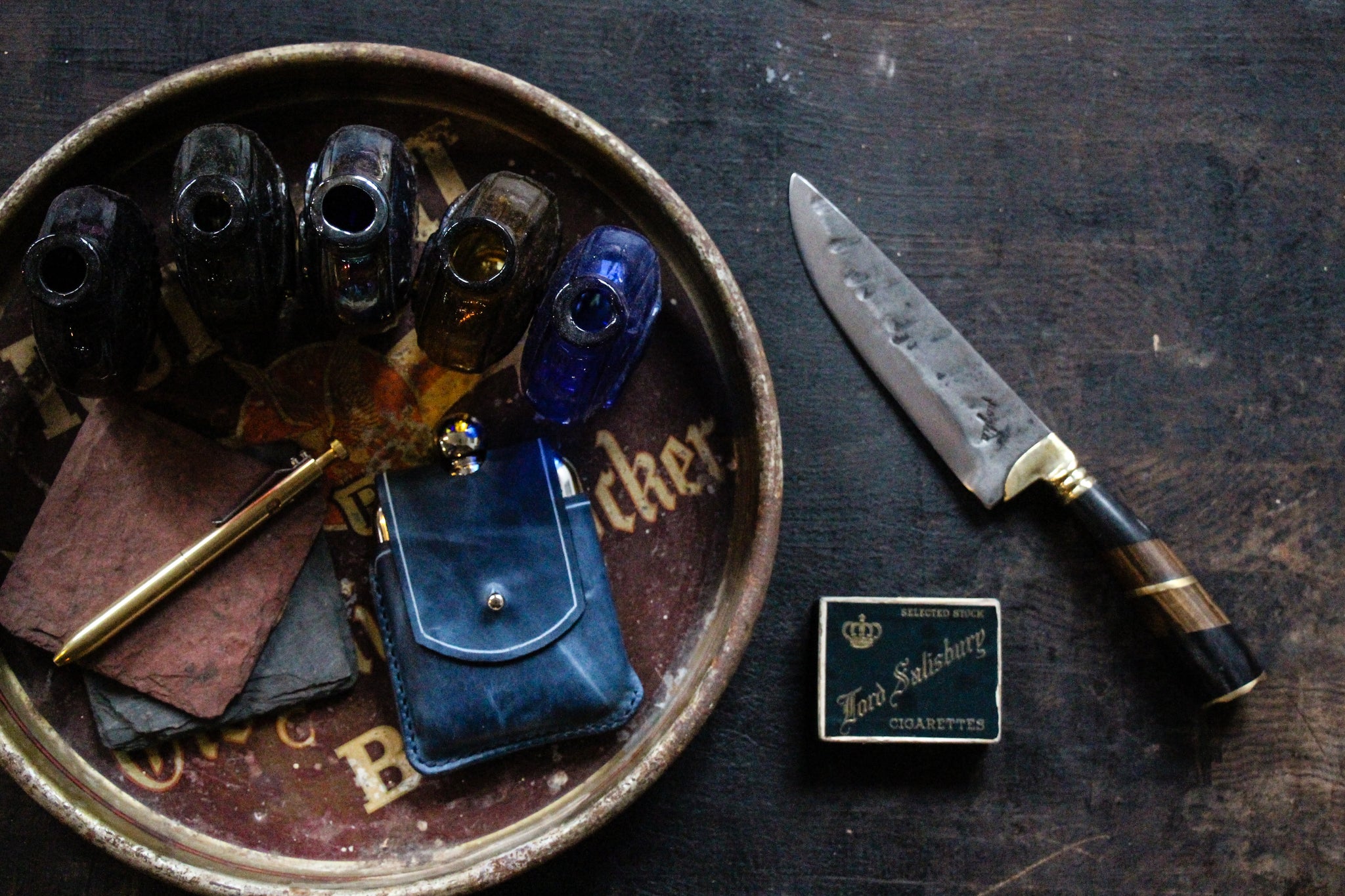 Markings
Markings
One of the joys of collecting vintage flasks, is discovering the markings that accompany them. Often on pewter, silver and even glass flasks you'll find markings that reveal several details about the origin of the flask. These marks will usually fall into five categories though variations certainly exist:
- Maker
- Capacity
- Inspector
- Ownership (initials or coats of arms)
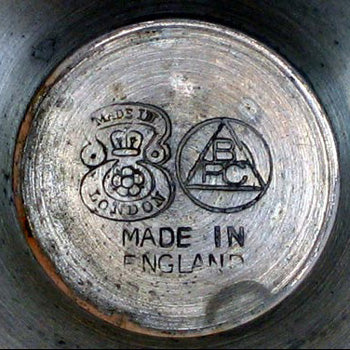 |
 |
 |
Care and Cleaning
Finally, a note about care and cleaning. Before using your flask for the first time, you should rinse it several times with a little water to clean out any residue left over from production. For a more thorough cleaning, mix equal parts of warm water and white distilled vinegar and fill your flask half full before closing the lid and shaking vigorously. Thoroughly rinse and then add your favorite distilled spirit. Never clean your flask with soap as this will taint the flavor of the contents.
Drink moderately, for drunkeness neither keeps a secret, nor observes a promise.
—Miguel de Cervantes
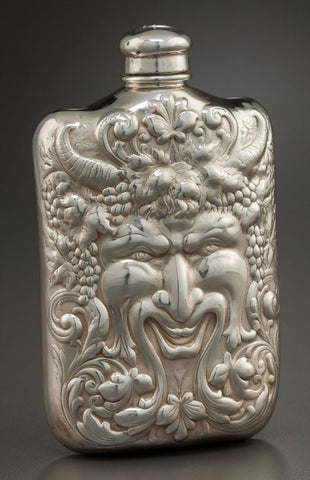 |
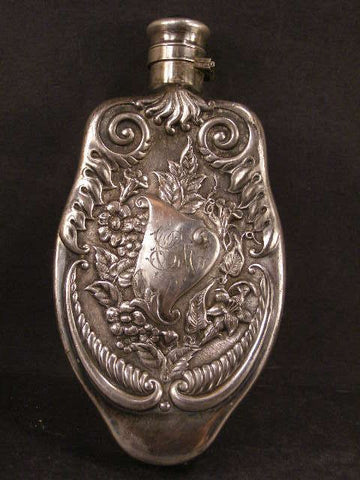 |
 |
 |
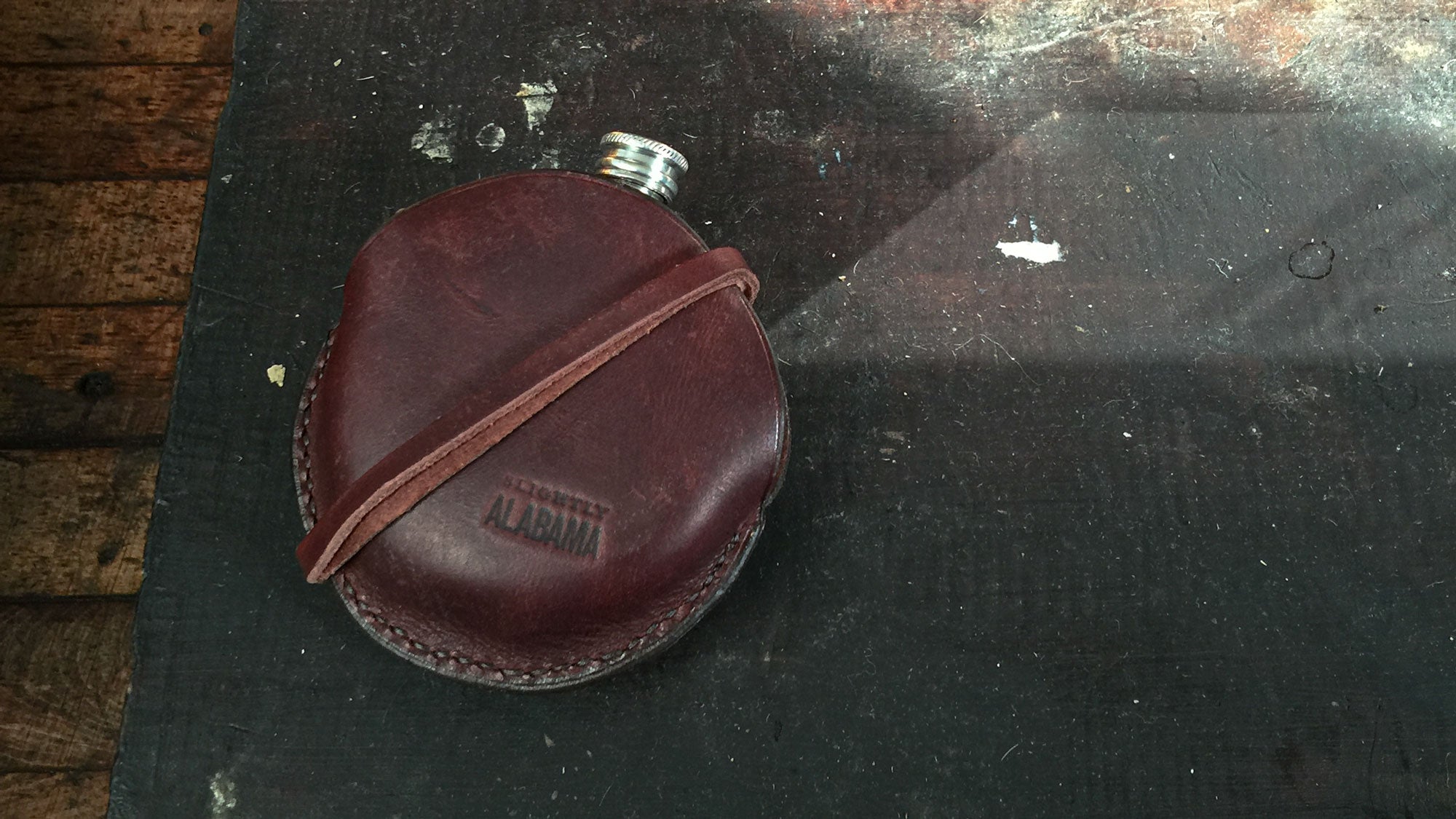

For Slightly Alabama, our own contribution to this history is the River Flask—a stainless steel, 7 oz. pocket flask wrapped in a hand stitched leather case. Each one is handmade in our Ridgewood, NY studio and comes in a variety of leather colors. Additionally, we offer free monogramming to personalize your flask for yourself or as a gift.




